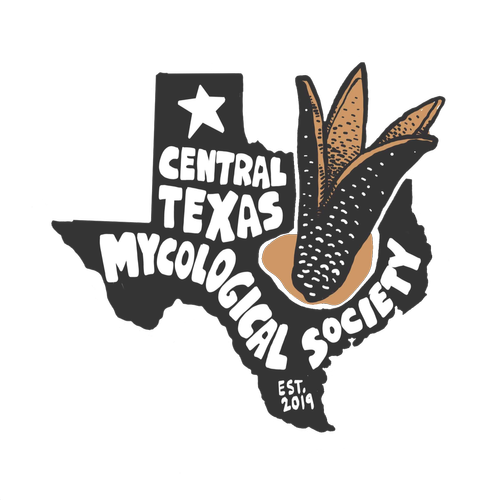PART 3: Grow Mushrooms in a Straw Bale
Mycology in the Garden
In traditional straw bale gardening, bales are “conditioned” by adding nitrogen-rich compost or manure to the bale to provide nutrients and initiate decomposition while growing veggies. You can use mushroom grain spawn in a similar way, and the fungi will facilitate the faster breakdown of the straw while growing mushrooms.
TIP: Be sure to use straw, not hay because the seeds will sprout and become weeds.
LOCATION
You'll want to place this in a shady spot that is protected from wind, and is within reach of your garden hose!
Materials Needed
Substrate: Straw Bale. Available in Austin at Callahan’s General Store for $12.
Spawn: Any Oyster Variety. This is the most important material you need for growing mushrooms is the spawn which is the equivalent of seeds. You can purchase bags of spawn from your local mushroom farm or buy it online for around $30. We Recommend: North Spore, Mushroom Mountain, and Field & Forest. Oysters (Pleurotus ostreatus): Oyster Mushrooms grow well outdoors and readily outgrow competitors and potential contaminants. This mushroom grows in several bright colors such as pink, blue, and yellow. Blue tends to be the best for growing outdoors. The taste of oyster mushrooms is very mild, and some describe it as subtly woody or like seafood. Oysters grow in partial shade and prefer straw to denser woody substrates.
Tools: Garden Fork, Spade, Pry Bar
GET MUSHROOM SPAWN FOR FREE
Many times mushroom farms have used sawdust blocks that have grown mushrooms once, and then end up getting tossed in the waste stream. Check with your local mushroom farm to see if you can help them reduce waste and use the spawn in your organic garden. If you are in Austin, we are collaborating with a new local mushroom farm Small Hold to help keep used mushroom blocks out of the waste and help get them into gardens around Austin and building more soil! Small Hold farms delicious, specialty mushrooms that are available for purchase at Central Market.
The mushroom blocks are for free but you can also support our mission of helping the crew that is making sure they stay out of the waste by making a donation or becoming a member.
I’m NOT from Austin
I’m from Austin
STEPS
Soak bale: Soak in water for a few hours. It will soak water up like a sponge. Use hot water if available to make for a cleaner substrate.
Inoculate Straw: After the straw has drained, disperse spawn evenly on all sides of the bale, getting as close to the center as possible. It’s helpful to use a spade, or garden fork to get deeper into the bale. We even used a pry bar to loosen it up. Use one 5 lb bag of spawn for one straw bale.
Watering: While the mycelium spreads, be sure to keep the bale hydrated, lightly watering when you water your vegetables. After 7-14 days you will start to see mycelium colonize the straw.
Keep the Bale Cool: Once temperatures exceed 80 degrees, the bale may get too hot for mycelial growth. Try placing in the shade or use shade cloth. You can also inoculate with more spawn to keep your mushrooms growing as temperatures rise.
Harvest and Enjoy: Time to harvest will likely be about 10-21 days depending on the oyster species.Try to harvest your oyster mushrooms right before they drop spores. You will know they are ready to drop spores when the caps start to curl upwards. Remove the mushroom cluster from your bale at the base of the cluster with a knife, or simply twist off with your hand.
Mulch Your Vegetables: After a year or less, the straw will be decomposed, great as worm food, compost, or as mulch for your vegetables.
RELATED videos in the series:
Part 1: How Fungi Benefits the Soil
Part 2: Grow Mushrooms on Wood Chips in The Garden
Part 3: Grow Mushrooms in a Straw Bale
Part 4: Grow Mushrooms in Containers
Part 5: Grow Mushrooms on Logs
Part 6: Grow Mushrooms using Trench Composting Method
